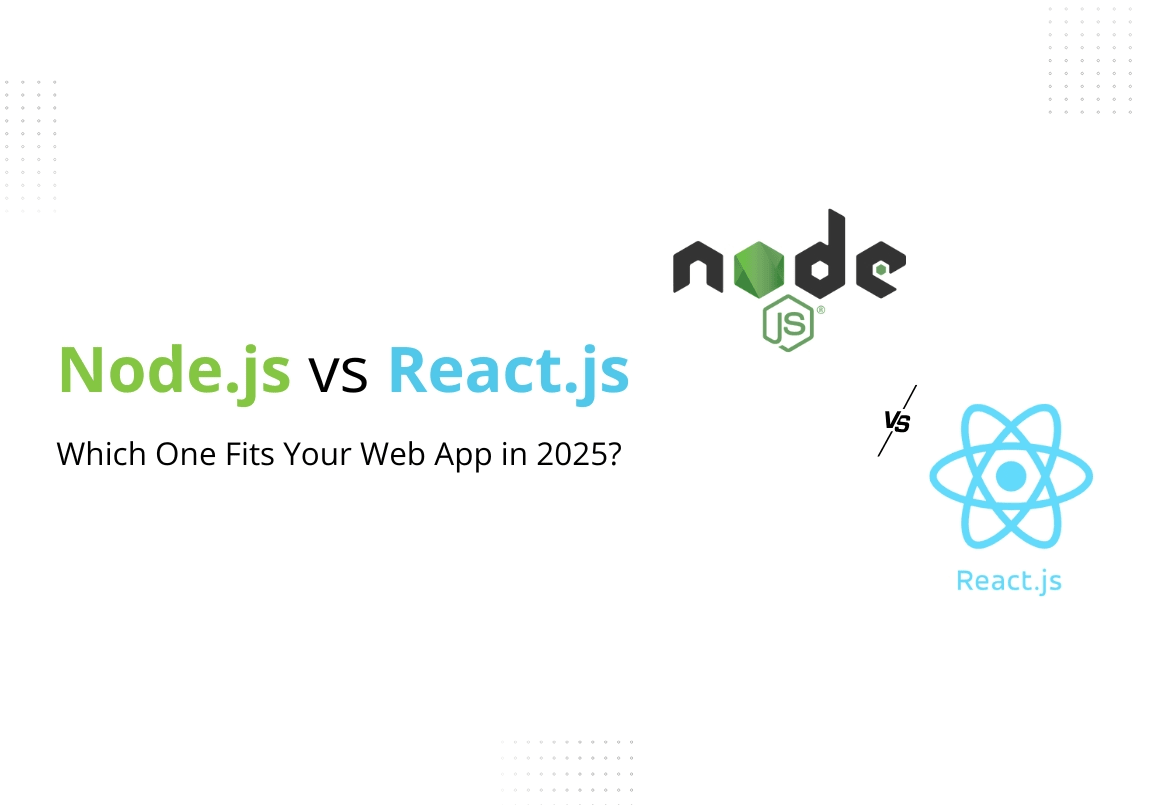
You probably aren’t asking which is “better” when weighing Node.js versus React.js. You want to know which one makes more sense in light of the building you’re working on and the time it will take to get there. That is a valid inquiry. The frontend, which is what users see and touch, is managed by React. The backend, which houses your logic, performance, and data flow, is powered by Node. They solve different problems, but together, they often shape the backbone of modern web applications.
The real decision isn’t technical, it’s strategic. What is your product’s current need? How quickly do you intend to launch? What kind of team can you realistically build or hire? If you’re working with a ReactJS development company, managing internal resources, or trying to scale with dependable web app development services, these are the questions that matter. This isn’t a showdown. It’s a stacking tactic. Let’s get started.
Contents
Why UI-Driven Web Development?
Utilizes React.js to Lead React isn’t just popular, it’s the default choice for teams that need to move fast without compromising on user experience. React, which was initially developed by Facebook, is now the standard for creating fast, interactive, and scalable frontends, and for good reason. React provides you with: at its core Component-based architecture, which makes interfaces easier to build, maintain, and scale
Reusability, which enables a uniform user interface across large applications A massive ecosystem, with tools like Next.js for server-side rendering, routing, and performance optimization
This is why React shows up in everything from startup MVPs to complex enterprise apps. React is probably the best choice if your product’s success depends on how users interact with it, such as speed, responsiveness, and a clean user experience. You are betting on a technology that is reliable, scalable, and in high demand if you are hiring, working with a ReactJS development company, or evaluating long-term web app development services. Also, that is a smart wager. Behind the Scenes: How Node.js Works Node.js isn’t a trend, it’s a strategic choice for teams that need a fast, event-driven backend that can scale without heavy infrastructure overhead.
Unlike traditional backend frameworks, Node runs on a non-blocking, single-threaded architecture. Considering real-time chat apps, collaborative platforms, marketplaces, APIs, or any other application where user experience performance and responsiveness are essential, this makes it ideal for handling a large number of concurrent requests. What makes Node.js a smart backend choice in 2025:
Built on JavaScript so that your frontend and backend teams can communicate with each other, reducing silos and speeding up delivery By default, it is asynchronous, making it ideal for real-time apps and systems with a lot of I/O. Strong ecosystem, with npm offering the largest open-source package library for backend development
Why it works for business: Node shortens development cycles and simplifies team structure, especially valuable for startups and growth-stage teams needing rapid releases. It is widely used by tech-first companies in the US, including logistics platforms and product-driven SaaS companies. And when paired with React, it creates a unified stack that’s easy to maintain, scale, and hire for, especially when leveraging full-stack talent or working with streamlined web app development services.
Node does not attempt to perform all tasks
It prioritizes speed, scalability, and simplicity, which is frequently precisely what your product’s backend requires. How the best teams make decisions about more than just stacks The most effective product teams in 2025 aren’t obsessing over frameworks. Time-to-market, technical adaptability, team velocity, and long-term maintainability are their top priorities. React and Node happen to be popular but the smartest teams don’t adopt them because they’re trendy. Because they correspond to strategic priorities, they adopt them.










